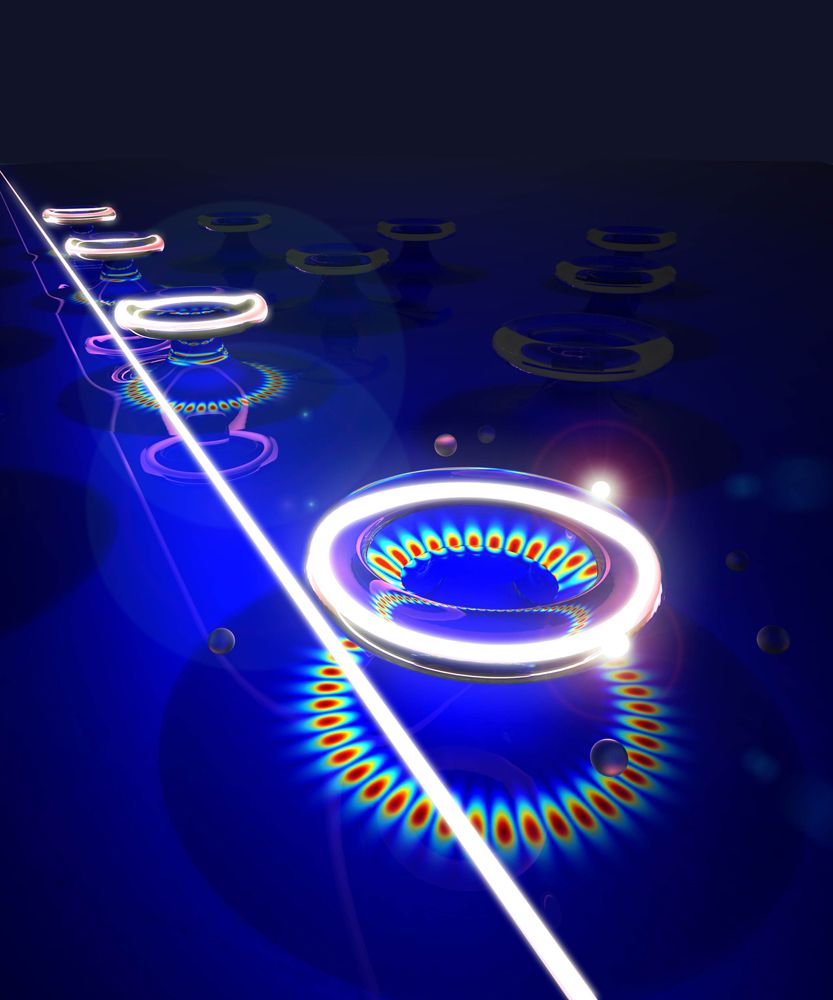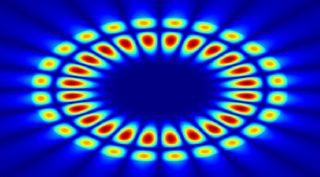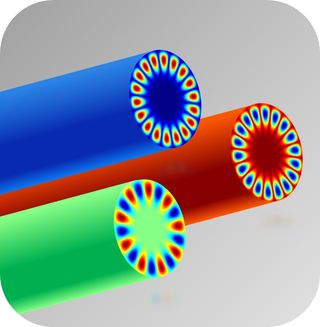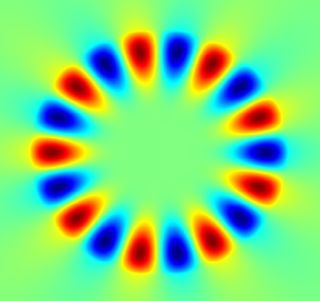
'Whispering Gallery' of Light Speaks Loudly on Disease Detection (Op-Ed)

Sarah Bates, a public affairs specialist at the U.S. National Science Foundation (NSF), contributed this article to Live Science's Expert Voices: Op-Ed & Insights.
Common health tests, such as pregnancy and blood sugar tests, involve putting a drop of fluid on a test strip infused with a substance that will react with a specific molecule. The strip acts as a simple biosensor, a device that detects chemicals with the help of biological molecules such as proteins or enzymes. The devices work, but are limited in scope and can be imprecise. More complex health tests require time-consuming chemical reactions or bacterial culture.
Researchers funded by the U.S. National Science Foundation are creating a new biosensor that uses laser light, engineered viruses and advanced manufacturing techniques to more accurately and quickly detect biological molecules, in the smallest amounts possible, in food, water and even in human blood. And, such biosensors of the future may no longer be in cardboard boxes, but in fibers woven into clothes.

Whispering galleries of light
The basic mechanism behind such advanced sensors relies on an old phenomenon.
Engineers Elaine Haberer and Nosang Myung of the University of California-Riverside use laser light to amplify the detection of single particles, a technique known as whispering gallery mode resonators. [US Military's Skin Sensors Could Reveal Science of Sweat ]
Whispering galleries that involve sound have been around for a while. Famous examples include Grand Central Terminal and St. Paul's Cathedral in London, where the domed geometry of the rooms amplifies the faintest whisper to listeners well outside of earshot.
Sign up for the Live Science daily newsletter now
Get the world’s most fascinating discoveries delivered straight to your inbox.
Whispering galleries of light work much the same way, with waves of photons traveling within a circular space, an optical cavity. Any particles within these cavities encounter the waves thousands, or even millions, of times, changing the light in subtle ways that researchers can detect. The modern-day twist is in the shape and makeup of the cavity.

For the Riverside team, the cavity is actually a long, thin fiber that has engineered M13 bacteriophage viruses embedded in it. The laser is directed perpendicular to the length of the fiber, activating the sensor.
"So long as the cavity is circular and smooth, you can achieve a whispering gallery — you can even create one in a water droplet," Haberer said. "The challenge is to create smooth, durable cavities simply, so they can be used for different purposes."

Electrified cotton candy
One technique to manufacture such cavities is known as electrospinning, which creates long, hairlike fibers made of plastic, metal or ceramics.
This fiber-making process is like making cotton candy," said Myung, who has worked with nano-size, biomanufactured structures for more than a decade. "You have a drop of liquid. Spin it. Out comes a long fiber. It's just like a cotton candy machine, except you apply electrical fields to spin it up," he said.
The process sounds straightforward, but only with recent advances in manufacturing can the fibers now be made quickly and cheaply. The challenge is to make them perfectly smooth and to insert the viruses that interact with the biological molecules the engineers want to detect.
Myung and his graduate students can integrate different types of viruses during the spinning that will enable the sensors to detect different kinds of molecules. For example, one fiber might detect glucose, while another senses cholesterol.
"It's like making cotton candy that's a different color," Myung said.
Using viruses is another new approach for biosensor technology . Not only are few — if any — biosensors created by electrospinning, most use enzymes. But enzymes are fragile and don't last long at room temperature, according to Haberer. Viruses have more staying power.
"Viruses are just protein surrounding genetic materials, so they are more stable than enzymes or antibodies, and we can pack more biosensing molecules on them," Haberer said.
Preliminary tests show the viruses hold up pretty well to the electrospinning process, but there is some loss. The researchers continue to refine the process.

(Laser) cavity dwellers
The eventual goal is to densely bundle these fibers together to sense many molecules at once, and to do so more quickly with less bodily fluid than conventional methods. That same, single drop of blood could provide all the biological material that you or your doctor would want to analyze.
"Rapid, on-site detection of biomolecules is critical for health care, environmental monitoring, food safety and quality," said Usha Varshney, program director in the NSF Division of Electrical, Communications and Cyber Systems, who funds the research. "There is a great demand for novel, high-performance sensor technologies, able to detect many target biomolecules within small sample volume at a reduced cost."
The project is part of a larger trend in research being done at the intersection of disciplines, with significant progress coming from unexpected places.

"These cavity materials are novel; no one has done this before," Haberer said. "With these fibers, you can imagine different types of sensors in the future, on different types of surfaces, like in clothing."
For the short term, the cavities are still fragile and best-suited for more lab research. Consumers will have to wait a long while for laser-powered, biosensing suits.
To learn more about other NSF-funded, light-enabled technologies, visit NSF.gov/light.
Follow all of the Expert Voices issues and debates — and become part of the discussion — on Facebook, Twitter and Google+. The views expressed are those of the author and do not necessarily reflect the views of the publisher. This version of the article was originally published on Live Science.











